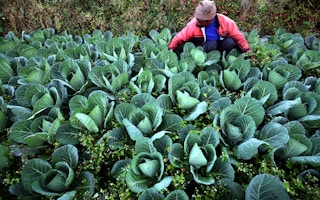We need to create, prepare and consume food differently. In every part of the food value network, we need to create system value, not system decay. In an earlier post, we established that today’s food system is falling short. What, then, do we propose as an alternative? How can we heal our food system and what can and should a healthy food system look like?
We are a long way from this Regenerative Diet on a global scale. Yet we know that there are several guiding elements that would support our decision-making as we rehabilitate the way we produce and enjoy food. Here is a proposed set of characteristics
- The eater—not the consumer—comes first: We propose our future diet should be “eater-centric”, which is different from “consumer-driven”. We need to shift the conversation from being consumer-driven (“They like sugar, so we sell them sugar…”) to being system-driven (“We know that if people eat this, their health will be sustained as will the ecosystems which made the food possible”).
Corporations’ license to operate in the food and agricultural sectors will be based on their ability to nourish people well. The improvement of human health will be the primary goal of any company in the food value chain. - Eating food heals the system: The question, “If more people ate this, would the world around us be better off?” has to be asked, and the answer has to be, “Yes.” This still allows for regional, cultural and personal diversity and breaks out of the divisive “meat bad, plants good” dichotomy. It shifts the equation from “what we believe” to “what we can demonstrate is creating the conditions that support life”.
We know that farming practices that reduce biodiversity or do other damage to natural systems are detrimental to the wider system. Therefore, they need to change. Successful actors in a regenerative system will proactively ask and answer the question, “How is this contributing to overall human and ecosystem health, without undermining it?” - The business model incentivizes healthy eating: A regenerative diet requires that the business model of any food value chain company goes beyond how it is “increasing productivity” (e.g. a biotechnology that requires pesticide use in order to be profitable) or “improving consumer access and choice” (e.g. a floating grocery store of processed foods on the Amazon) and calls on a company to determine how—or even if—it is enabling eaters to be healthy without undermining other aspects of any social or environmental systems.
There is room for interpretation and absolute answers will always be elusive but we can make more informed, purpose-driven decisions than we currently do. A regenerative business model creates financial value by intentionally contributing to human health, and while not being financially rewarded in any way for undermining human health or the health of other life on Earth.
These are tall orders; however, several companies have already been delivering progress. Marks and Spencer’s Plan A has long been lauded for aggressive ambitions across key products and ingredients in its food. They’re working directly to prevent food waste in the field, at manufacturing, and on shelves.
They blend business experience, Life Cycle Analysis, stakeholder input and benchmarking to inform approach and use science to clarify complicated tradeoffs, e.g. packaging vs. length of product life. There is still a significant shift required to induce healthy eating and a truly sustainable system contained within such a plan, but it’s pointed in the right direction.
Panera has increased their commitments to animal welfare and to removing artificial ingredients and antibiotics from all products, now sourcing 100 per cent vegetarian-fed and antibiotic-free chicken, with a brand focus on “food you can feel good about” and “good eating”.
Concern over antibiotic resistance in the food-supply has grown significantly in the last several years (mentions in corporate reporting have increased 55 per cent since 2010) and in response several companies, Tyson and McDonalds among them, have committed to antibiotic-free meat in the next several years.
Tyson even looks poised to challenge the longstanding history of its meat products by investing in Beyond Meat, a popular meat-substitute start-up.
However, a meaningful connection between profitability and regenerative eating is still practically invisible in the business models of the large food companies driving the growers’ agendas. Investing in diversified, less environmentally harmful products is a solid start.
What is needed to make further progress is discourse and action on the impact of growing and consuming the foods we currently eat,and scaling the new and improved solutions so they become the minimum standard, not the notable case study.
“
A meaningful connection between profitability and regenerative eating is still practically invisible in the business models of the large food companies driving the growers’ agendas.
One strong example you might not expect comes from a company known for sugary-beverages: PepsiCo. The company’s Performance with Purpose explicitly connects the human and environmental health nexus,and they have steadily shifted their portfolio and supply chain activities accordingly over the last decade, with signals of far more significant changes to come.
And this isn’t just a flashy report (in fact the flashy report may do the real innovation and business model revisions underway a disservice.) CEO Indra Nooyi connects this portfolio and measurement shift directly with their steady financial gains, calling out in their September earnings call why their strong financial growth is directly due to Performance with Purpose, and not just in a token mention but as the core of her remarks to investors.
Just to be clear, this is not simply calling out a newly polished CSR program. This is an effort headed by Dr. Mehmood Khan who is Vice Chair and Chief Scientific Officer—there is no Chief Sustainability Officer at PepsiCo. It has been in play for a decade and is considered still in its infancy by their own admission.
Interestingly, one of the most significant shifts he has signaled externally, along with the technological and nutrition changes that the company must deliver, is a mindset shift to make sure they are solving the right problems.
We anticipate greater attention to be paid to this approach, and more examples to come. Corporate reporting has expanded from growing mentions of nutrition to include issues like animal welfare, antibiotics, living wage, food waste and responsible sourcing at significantly higher rates in the last several years.
Keeping the eater at the center of all food value chain actions, ensuring that the very act of eating is restorative for the eaters and the world they live in, and incentivizing businesses to make this the norm—this is the future of food we want.
Corinne Hanson is manager, SustainAbility; Lorraine Smith is an associate at SustainAbility. This post is republished from the SustainAbility Insights blog.











